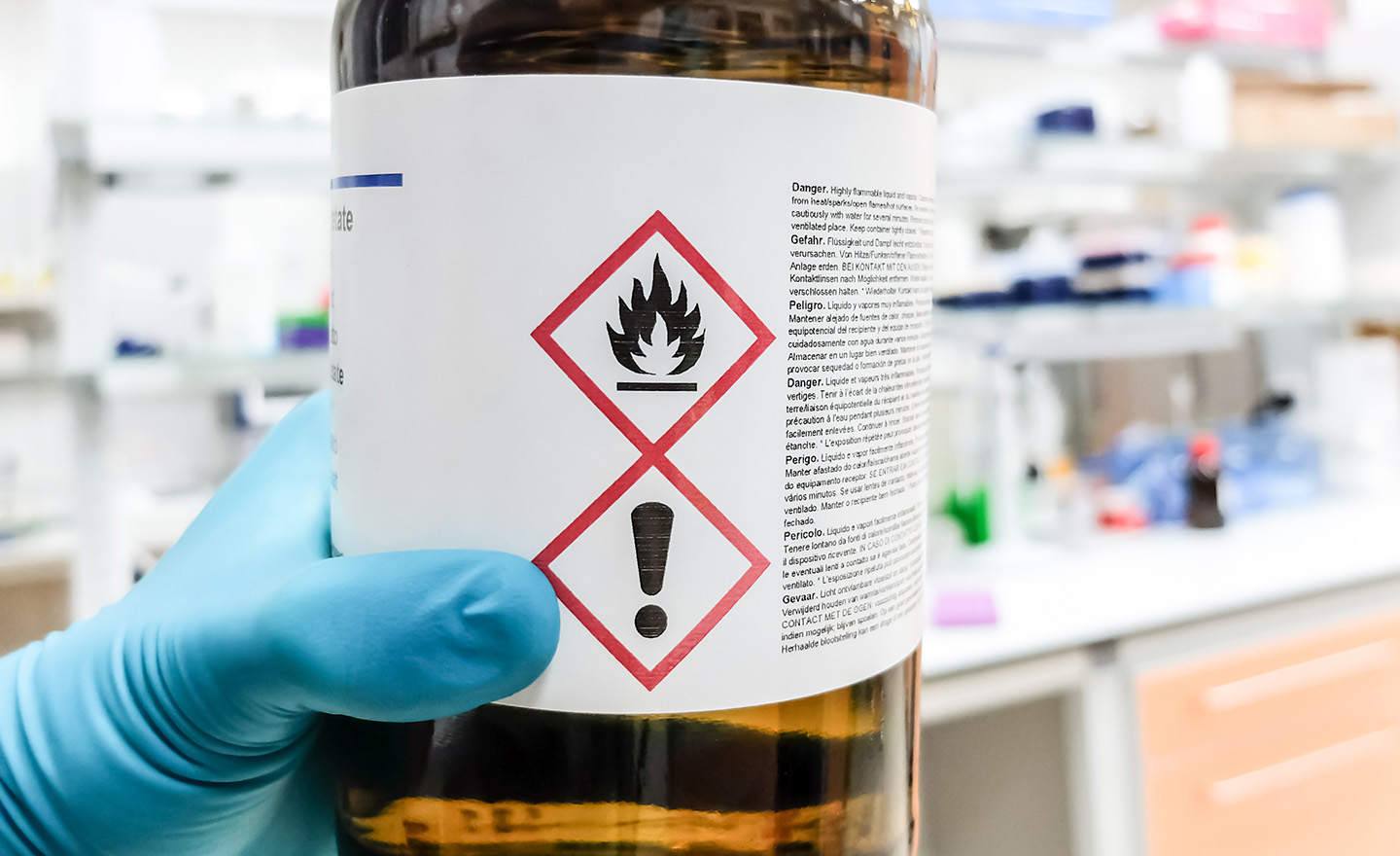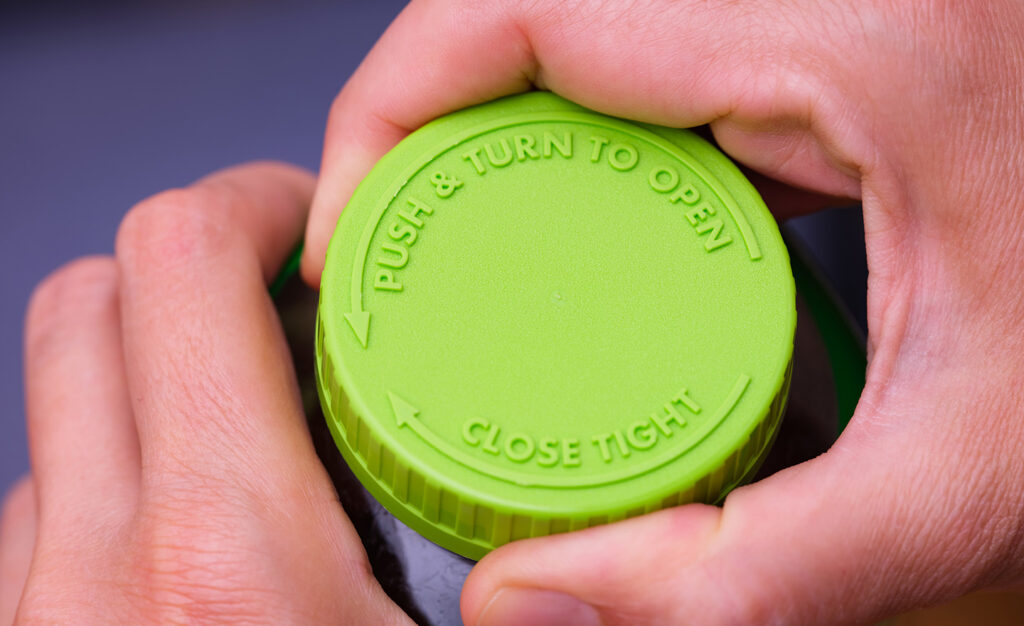Understanding requirements for chemical substances and mixtures
The law on Classification, Labelling and Packaging (CLP) of chemicals (Regulation (EC) No 1272/2008) protects human health and the environment from hazardous chemicals. Since its introduction in 2008, the regulation has undergone several major updates—including the recent addition of new hazard classes for endocrine disruptors, persistent and mobile substances, and more.
Understanding how these ever-changing requirements affect your business is critical to avoid non-compliance and maintain market access.

Under CLP, all suppliers of chemical substances and mixtures must assess their hazards, a process known as ‘classification’. If a product is classified as hazardous, it must be appropriately labelled and packaged before being placed on the market. In many cases, suppliers must also notify the classification to the Classification and Labelling Inventory and submit a Poison Centre Notification (PCN) to the relevant national authorities.
Sagentia Regulatory can help you navigate these obligations with confidence. We support accurate classification and ensure your products meet all applicable CLP (and REACH) requirements.

Classification
If your business manufactures, imports or distributes chemical substances and mixtures within Europe, you must ensure they are properly classified. That means evaluating your portfolio against current classification criteria set out in the CLP Regulation, as per the latest revisions.
- Many substances have a harmonised or mandatory classification, which suppliers must use as a minimum
- In the EU, four new hazard classes were introduced in December 2022 with transitional periods for their entry into force stretching to 2028:
- Endocrine disruption for human health (ED HH)
- Endocrine disruption for the environment (ED ENV)
- PBT (persistent, bioaccumulative, toxic), vPvB (very persistent, very bioaccumulative)
- PBT (persistent, bioaccumulative, toxic) and vPvB (very persistent, very bioaccumulative)
- PMT (persistent, mobile, toxic) and vPvM (very persistent, very mobile)
- Our regulatory and toxicological experts can review your substances or mixtures to derive the correct classifications and advise on specific obligations and timescales
Labelling and packaging
Once a substance or mixture has been classified, any human health or environmental risks need to be conveyed effectively via clear labelling.
- The CLP Regulation defines the content of a label and the layout of various label elements. All hazardous substances and mixtures must be clearly labelled with standardised elements such as pictograms, signal words, hazard statements and precautionary statements to aid safe use and informed decision-making
- Some classifications include packaging requirements such as child-resistant fastenings (CRF) or tactile warnings of danger (TWD)
- Under the revised CLP Regulation, all advertising materials for hazardous substances and mixtures, whether online or offline, must clearly display relevant hazard information
- Sagentia Regulatory can identify relevant labelling, packaging and advertising requirements and help devise a compliant, cost-effective strategy


Notifications
Certain substances and mixtures require notification under the CLP Regulation, a critical but often complex and time-consuming aspect of compliance.
- Classification and Labelling (C&L) Inventory – for certain substances and mixtures, a notification must be submitted to the C&L Inventory, which follows a defined format and includes accurate classification details
- Poison Centre Notifications (PCN) – in the EU, businesses placing certain hazardous mixtures on the market must provide information to appointed bodies in the relevant Member States. These national bodies make this information available to poison centres so that they can give advice to the public or medical personnel in the event of an emergency
- Sagentia Regulatory can aid the preparation, submission and coordination of all required notifications
Sagentia Regulatory support for CLP
Expert guidance on CLP; practical support fulfilling associated CLP and REACH obligations.
- CLP and REACH are closely interlinked. We will ensure your classifications are correct, bringing clarity to your wider regulatory responsibilities under REACH and other legislation, so you can be confident that they are properly fulfilled
- Sagentia Regulatory’s chemists, environmental fate experts, toxicologists, ecotoxicologists and regulatory consultants will help you navigate the complexities of the EU Chemicals Framework. We’ll ensure your wider regulatory strategy, and specific elements such as label design, are proportionate and compliant
- Our experienced team can support the preparation of important documents such as labels, safety data sheets (SDS), extended data sheets (eSDS), classification and labelling (CLH) dossiers and CLP notifications
Why choose Sagentia Regulatory?
Recent CLP Regulation revisions mean manufacturers, importers, and downstream users of chemical mixtures and substances need to re-evaluate their portfolios. Our team of experts offer strategic guidance on this matter, working with a highly-skilled team of scientists and regulatory consultants to determine classifications and obligations.

